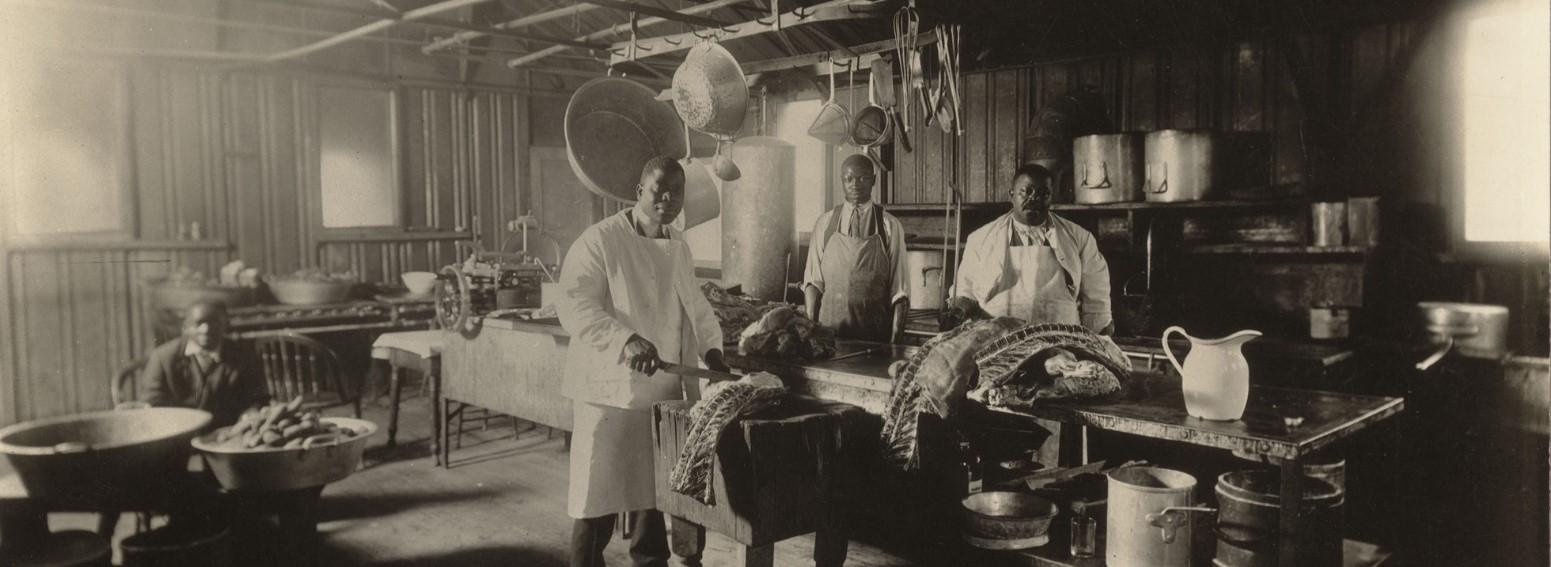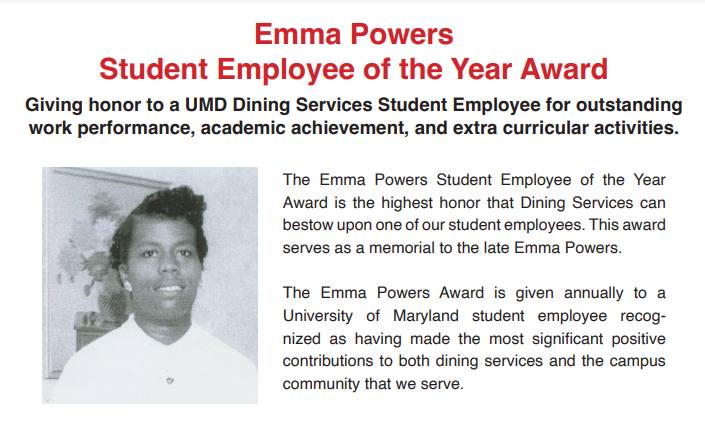The Dory Story
The Dory Family
In 1893, John F. “Frank” Dory of the Lakeland community of College Park, MD set foot on the Maryland Agricultural College campus and began a long legacy of food service to the campus that has extended almost as long as the university itself. The Dory family’s contributions of service to the campus, from the nineteenth century to the present, are found today not in the kitchen but in the university’s archives.
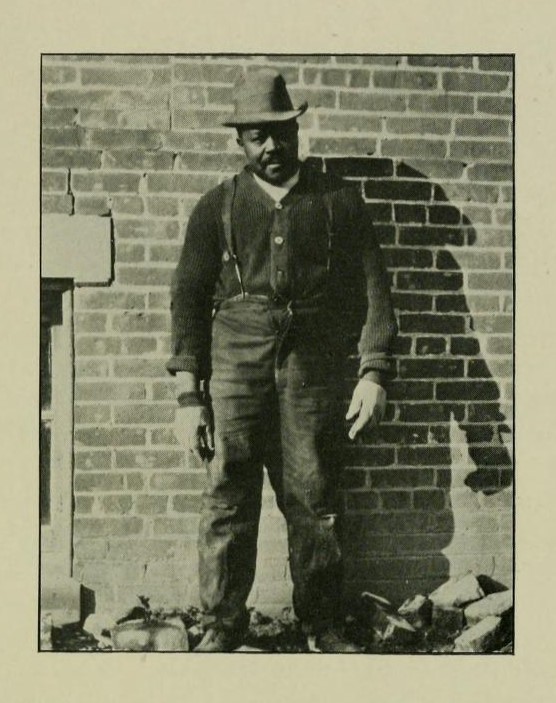
The Dory family name first appears on an ordinary sepia-toned photograph (pictured at the top of this page) of men working in the kitchens of the “Old Barracks,” one of original campus buildings that perished in the 1912 campus fire.
The origins of the university’s dining services are reflected in this simple photograph, with four individuals taking part in the work to feed students, staff, and faculty that is still familiar today. Staring directly towards the viewer, each man is caught in the moment of their livelihoods in the kitchen. William Dory, on the left, is captured in a still moment between weighing potatoes on an oversized scale. In the middle of the scene, Ferdinand Hughes pauses in cleaving on a well-worn butcher block, Spencer Dory stands in a moment of idleness waiting for the next cut of meat to add to the piles, and the head cook, Charles “Charlie” Dory, is ready with a butchering saw in preparation for the moment after the camera’s flash.
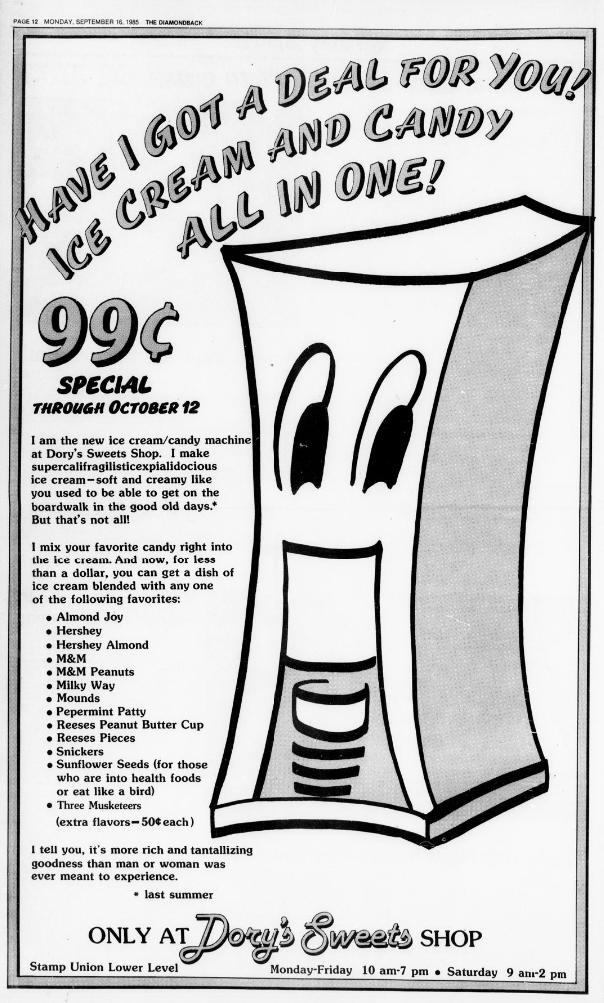
Graduate students in Dr. Quint Gregory’s course, “Collaborative Curation: The 1856 Project,” pursued the first official line of inquiry into the presence of the Dory family on campus in 2022—and explored the means by which the university has benefited from the labor of local Black communities since its founding. While exploring University Archives' Office of the Comptroller records, students came across a ledger (pictured at the bottom of this page) with labor entries that show Charlie Dory earning $53 on July 31, 1917 for his work in the domestic department.
Later campus histories elucidate the legacy of Delarce “Lock” Dory’s 52 years of service. Lock began his employment with UMD in 1923, working with his father Charlie, and spent over five decades of his life on campus providing both food and care to those who encountered him. As his grandson, Curtis Lockerman, described for the university’s Dining Services newsletter in 1993: “He put people first and always tried to help others…and for this he was well known.” His service to the university was honored with the creation of Dory’s Sweet Shop, a former ice cream shop located in Adele H. Stamp Student Union.
Another family member, Emma Dory Powers, is still honored today by Dining Services through the Emma Powers Award given to exemplary student employees.
Beyond the family’s service to the university, the lives of the Dory family have been characterized by their commitment to such organizations as the local Elks Lodge and their church as well as civic participation in and around the Lakeland community. The Lakeland Community Heritage Project’s work helps to expand the narrative away from only that of Black labor, to the human and personal connections fostered across Route 1. The Dory family is only one small part of Lakeland’s history connected to the University of Maryland campus and further research continues to rediscover the individuals, families, and stories that have been forgotten in the archives.
In Spring 2023, the Collaborative Curation graduate course unveiled a semester-long exhibition titled, “The Heart of the Table,” in the Parren J. Mitchell Art-Sociology Building that aims to begin exploring the Dory family’s legacy—in and out of the kitchen, and beyond the confines of the university as well.
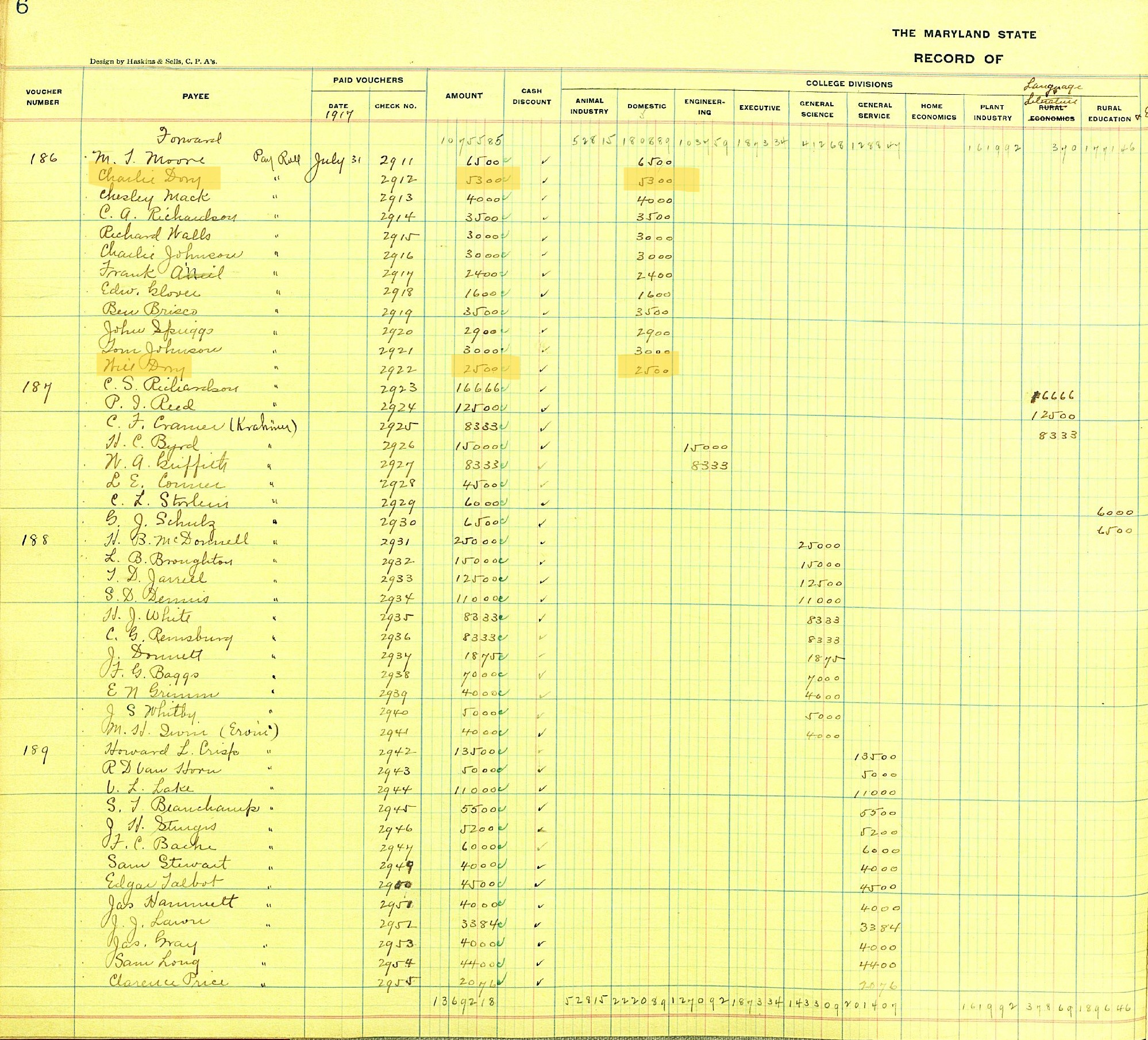
A scanned page from the Office of the Comptroller's 1917 Disbursements Ledger, showing labor payments made to individuals; the names of two Dorys are highlighted
Section authored by Mallory Haselberger, Student Assistant for Maryland & Historical Collections and The 1856 Project, and member of the 2022 Collaborative Curation course
